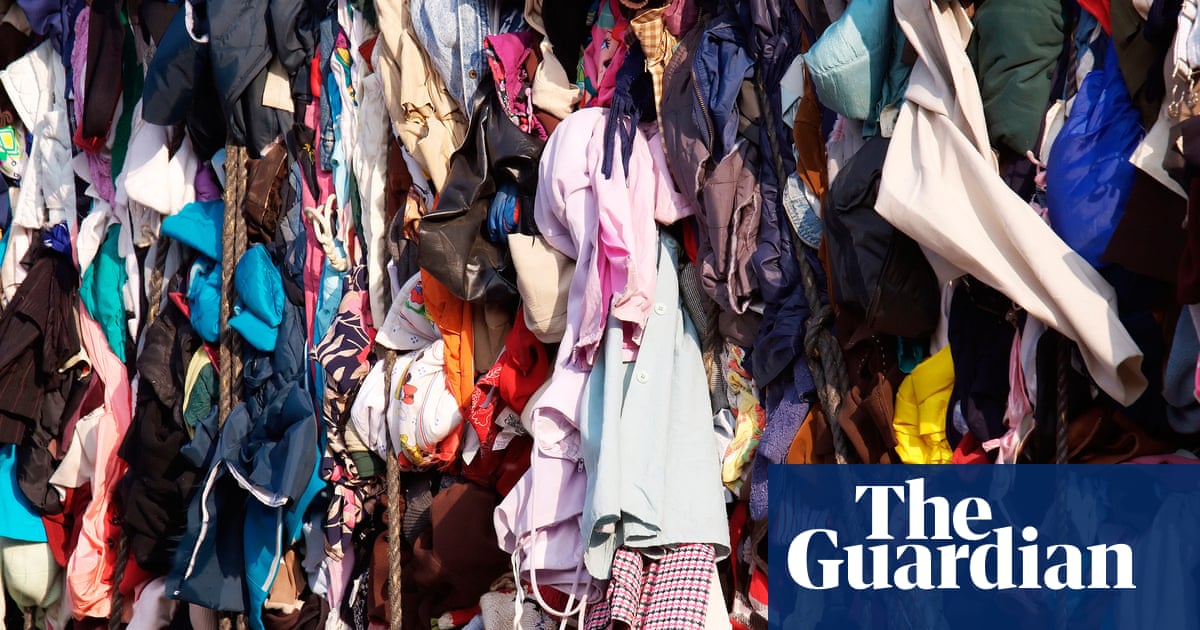Can renting our clothes reduce fast fashion’s climate crimes? - 4 minutes read

How do you solve a problem like the global fashion industry? From the declining lifespan of clothes to the lightning metabolism of fashion consumerism and the increased reliance on petroleum-based synthetic fibres, this is one industry desperate for an ecological plan.
London fashion week – which ended this week – showed there still isn’t one. Coverage was dominated by the launch of a new collection from one of the fastest models of production and e-retail, Pretty Little Thing, owned by the Boohoo group. It didn’t seem to matter that this show was not officially part of fashion week – it had all the ingredients of a smash hit, including a social media superstar turned creative director, Molly-Mae Hague. And, in something of a plot twist, alongside the brand’s runway show came the announcement that it will launch a pre-owned resale marketplace later this year “in a bid to encourage its shoppers to embrace sustainability”.
Of course reselling, reusing and extending the lifespan of garments is critical in the fight to bring some sanity into the fashion cycle. But to push out more fast fashion and then recirculate it later seems like the fashion equivalent of carbon capture storage. It may help soothe investors, but it is unlikely to decarbonise fashion.
Room for rent
Meanwhile, around the same time as PLT’s announcement a genuinely important fashion industry innovator – rental platform Onloan – announced that it was pressing pause, leaving a gap in the sustainable fashion ecosystem.
Fashion rental platforms all have slightly different business models. Byrotation is a peer to peer lending app, charging a borrower per loan and taking a percentage from lender and renter. There’s MyWardrobe – from former Whistles CEO Jane Shepherdson, who has said she wants renting clothes to be as commonplace as renting a car; HURR, who have teamed up with Selfridges and Hirestreet, which aims to take things mainstream, providing rental for M&S.
Onloan, meanwhile, offered a subscription model. Users could rent two or four pieces a month for £69 or £99. Unusually, the company bought and held stock. For co-founder Tamsin Chislett, who has a background running a fairtrade cotton project in Uganda, this is key to re-engineering the industry. “The fashion supply chain is riven with underpayment. For us it was important to pay for actual, finished garments to allow the manufacturing part of the supply chain to work,” she says.
Onloan was prepared to invest in buying wholesale, offering a royalty fee every time the piece was rented and winning the trust and partnership of prestigious yet traditional designers, such as Joseph. The theory is that getting access to these brands at a fraction of the cost is part of the alchemy that can turn consumers to renters and take the heat (and carbon) out of the system.
‘Risky’ business
Not everyone is convinced, though. In particular, a report published in May 2021 by respected Finnish academics put the boot in, concluding that renting clothes was less green than other options, including throwing them away. It got a lot of coverage, including in the Guardian. Not a good day for rental.
But there were flaws in that study, beginning with the fact that researchers assessed the impact of renting a pair of jeans, which are rarely borrowed from such platforms. Moreover, assumptions made on logistics and garment care (the study factors in high use of dry cleaning) were not representative of the way the business works either, with many companies using new, low-impact technology.
Fashion rental entrepreneurs believe they are getting to the point when they’ll soon have the data to prove that renting is the more sustainable option. But blunt analysis also fails to recognise the really big win that platforms like Onloan have achieved. They have changed the way people think about pre-worn clothes. The stigma is disappearing (something brands like PLT are no doubt fully aware of and keen to capitalise on).
But, in the end, it wasn’t an unfavourable study or even the global pandemic that did for Onloan. It was a quirk of HMRC’s tax breaks for investors in ‘risky’ startups. In effect, these exclude models that hold stock, deterring investors from Onloan’s models. (As Chislett puts it, “you want to disrupt the fashion system to make it sustainable, not to fit in with HMRC’s plans to have investors pay less tax”).
Source: The Guardian
Powered by NewsAPI.org